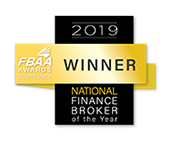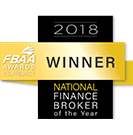If you’re trying to buy your first home, you’ve probably wondered if there’s a smarter way to save. One powerful option is to save your house deposit in super using the First Home Super Saver Scheme (FHSSS). It’s a government program that lets you make extra contributions to your super, then withdraw them later to help with your first home deposit. This strategy can help you grow your savings faster, thanks to lower tax rates and the power of compound interest. In this guide, we’ll walk you through exactly how the FHSSS works, step by step.
We’ll explain what it means to save through super, how to access your funds, and what rules to follow. If you’re a young couple, a solo buyer, or earning a modest income, this could change your game plan. As mortgage brokers in Brisbane, we’ve helped many first-home buyers navigate this process—and we’re here to help you do the same.

Overview Of The First Home Super Saver Scheme (FHSSS)
If you’re looking for a smarter way to save house deposit in super, the First Home Super Saver Scheme (FHSSS) is the answer. This government initiative helps first-home buyers grow their deposit faster by using the superannuation system. It allows you to make voluntary contributions into your super fund and then withdraw them—plus earnings—to put toward your home deposit. The goal is to give Australians a tax-effective, structured path to home ownership.
The FHSSS was introduced in 2017 in response to rising property prices and the challenges young Australians face when trying to break into the market. For many people, traditional savings accounts don’t provide enough growth or discipline. By using the FHSSS, you can take advantage of super’s lower tax rate and consistent returns to boost your deposit more efficiently.
How Much Can You Contribute?
Since 1 July 2022, the contribution cap for FHSSS is $15,000 per financial year, with a total cap of $50,000 across all years. This means you can contribute steadily over a few years and build up a decent-sized deposit. For couples, that amount doubles, potentially $100,000 combined.
Only voluntary contributions count. This includes amounts you add on top of your employer’s regular super guarantee. You can add these through salary sacrifice (before tax) or as after-tax payments from your personal savings.
Some Advantages Of Saving House Deposit In Super
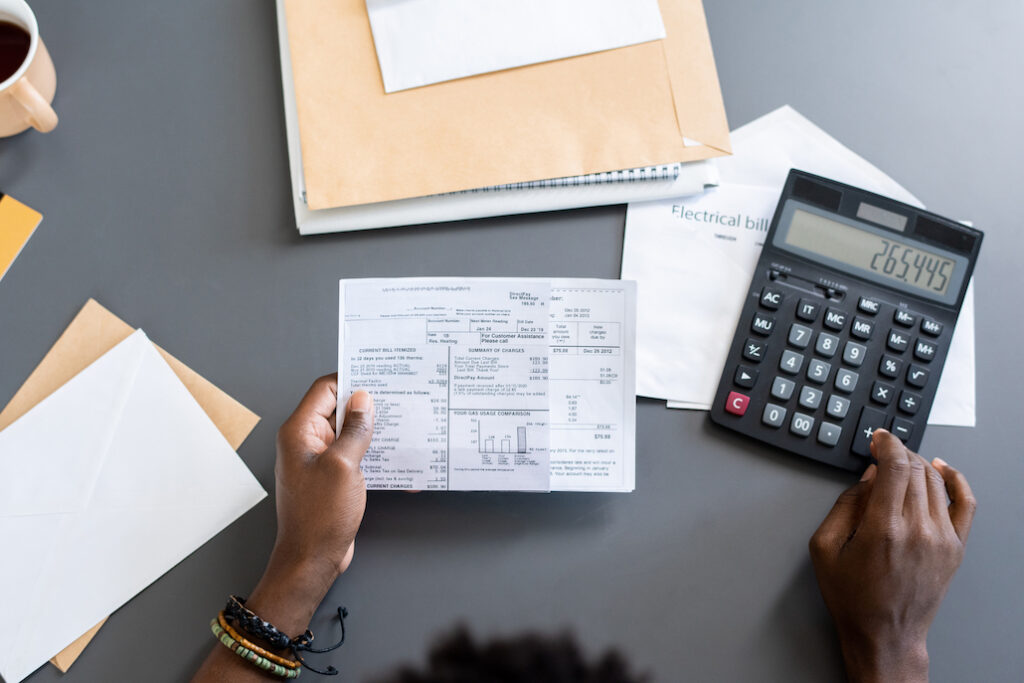
One of the biggest advantages of using super to save your house deposit is the tax benefit. When you make concessional contributions (those made from pre-tax income, like salary sacrificing), these are taxed at just 15% inside your super fund, generally lower than most people’s marginal tax rate. Not only that, but you can also earn money from your contributions – these are called “Deemed Earnings.”
How Deemed Earnings Work in Super
Any earnings on your voluntary contributions under the FHSSS are not calculated based on your actual super fund returns. Instead, the Australian Taxation Office (ATO) applies a deemed rate to calculate your earnings on those contributions. This deemed rate is set by the government and is based on the average 10-year government bond rate plus 3%.
- For the 2024–25 financial year, the deemed rate is approximately 6.74% per annum (this rate changes quarterly).
- The ATO uses this rate compounded daily over the period your contributions were held in super.
This deemed earnings rate often outperforms typical savings account interest rates, helping your savings grow faster than in a regular bank account.
How Much Faster Can You Save With Super Compared To A Bank?

Saving for your first home deposit can feel like a marathon. But the First Home Super Saver Scheme (FHSSS) can help you sprint ahead compared to a traditional bank savings account, thanks mainly to its tax advantages and the way your money grows inside super.
What Makes FHSSS Faster?
- Concessional Tax Rate on Contributions – When you put money into your super via the FHSSS, those contributions are made from your pre-tax income and taxed at just 15%, which is usually lower than your personal income tax rate. This means more of your hard-earned money stays invested and growing, rather than getting eaten up by tax.
- Growth on Your Contributions – Your voluntary contributions grow inside your super, where earnings are taxed favourably. The Australian Taxation Office calculates the growth on FHSSS contributions using a benchmark based on the 90-day bank bill rate plus 3%, which often beats the interest you’d get in a typical savings account.
Real-World Numbers: FHSSS vs Bank Savings
Scenario | FHSSS (with tax benefits and growth) | Regular Savings Account (4.5% interest) |
Annual contribution | $6,000 | $6,000 |
Growth over 5 years | Approx. $29,880 (including earnings) | Approx. $21,500 |
Extra amount earned | About $8,380 more with FHSSS | — |
This example shows that by using the FHSSS, you could save nearly $8,400 more after 5 years compared to stashing your money in a regular bank account earning 4.5% interest.
Step-by-Step: How To Use Your Super To Save A House Deposit

Saving for your first home can be challenging. Thankfully, the First Home Super Saver Scheme (FHSSS) offers a smart way to get ahead. Using your super to save a house deposit can speed up your journey to homeownership. Here’s a clear, step-by-step guide on how to use your super effectively.
Step 1: Check If You're Eligible
Before you start, it’s essential to check your eligibility. The FHSSS is designed for first home buyers in Australia. You must not have previously owned property, or in some cases, you haven’t owned a home in the past 10 years. Also, you need to be aged 18 or older and intend to buy or build your first home within 12 months of releasing your savings. We cover more on eligibility in a later section.
Step 2: Set Up Voluntary Contributions
Next, you’ll want to start making voluntary contributions to your super fund. These contributions are additional to the compulsory employer payments. They can be made from your pre-tax income (known as concessional contributions) or from your after-tax income (non-concessional contributions). As we mentioned before, The FHSSS allows you to contribute up to $15,000 each financial year and a total of $50,000 over time. Making these contributions helps you take advantage of the lower tax rate of 15% in super, compared to your marginal tax rate outside super. This is one of the biggest benefits of choosing to save house deposit in super.
Step 3: Track Your Contributions
It’s crucial to keep track of your voluntary contributions. Your super fund will report these to the ATO, but you should also monitor your super statements regularly. Knowing how much you have contributed and when helps you stay organised. Only voluntary contributions made from 1 July 2017 onwards count towards the scheme. Keeping records will make applying for the release of your savings easier when the time comes.
Step 4: Apply to the ATO for a Release
Once you’re ready to buy your first home, you can apply to the ATO to release your FHSSS savings. You’ll do this online via your myGov account linked to the ATO. The ATO will then calculate the amount available for release, which includes your voluntary contributions plus deemed earnings based on the 90-day bank bill rate plus 3%. It generally takes around 15 to 25 business days for the ATO to process your application and transfer the funds.
Step 5: Use the Funds Within 12 Months
Finally, after the funds are released, you must use them to purchase or build your first home within 12 months. If you don’t complete your purchase or construction within this timeframe, you’ll have to either recontribute the funds back into your super or pay tax on the amount withdrawn. This ensures the scheme’s funds are used only for first home purchases as intended.
By following these steps, you can take full advantage of the First Home Super Saver Scheme and significantly boost your deposit savings. The FHSSS is a valuable tool for Australians looking to get on the property ladder faster. It combines tax benefits with smart saving strategies to help you achieve your dream of homeownership. If you’re planning to save for a house deposit, the FHSSS could be the key to making it happen sooner.
Eligibility Criteria To Save House Deposit In Super

Before you start using the First Home Super Saver Scheme (FHSSS), it’s important to know if you qualify. The government designed this scheme to help genuine first home buyers, so there are clear eligibility rules to follow. Understanding these rules will help you make the most of this saving opportunity and avoid any surprises along the way.
Must Be 18 Years or Older
The FHSSS requires applicants to be at least 18 years old. This makes sense, as superannuation accounts generally belong to adults and are tied to employment and income. If you’re under 18, you won’t be able to participate in the scheme just yet, but you can plan ahead and start saving once you reach the eligible age.
Must Never Have Owned Property in Australia
One of the core eligibility requirements is that you must not have previously owned residential property in Australia. This includes land, a house, or an apartment. The scheme targets genuine first home buyers, so if you have owned property before, you generally won’t qualify. However, there are some exceptions. For example, if you’ve faced significant financial hardship or if your previous property was sold under particular circumstances, you may still be eligible. It’s best to check these special cases directly on the Australian Taxation Office (ATO) website for the latest guidance.
Must Intend to Live in the Home for at Least 6 Months Within the First 12 Months
The FHSSS is designed to support people buying or building a home to live in. Therefore, when you purchase your property, you must intend to live there for at least six months, and this must happen within the first 12 months after buying or building the home. This rule ensures that the scheme isn’t used for investment properties or holiday homes, but to help Australians secure their own place to live.
Must Not Have Previously Used FHSS Release
If you have previously accessed funds from the FHSSS, you cannot apply to use it again. The scheme is a one-time opportunity to boost your deposit savings, so it’s important to plan your contributions and withdrawal carefully. If you have already taken advantage of the scheme, you’ll need to explore other options for saving your home deposit.
What Counts As A Voluntary Contribution?

Understanding what counts as a voluntary contribution is key to saving a house deposit in super. These contributions are the extra payments you make to your super fund, beyond your compulsory employer contributions. Let’s break down the types of contributions, how they work, and what you need to know to track them properly.
Concessional vs Non-Concessional Contributions
Voluntary contributions fall into two main categories:
- Concessional Contributions are made from your pre-tax income. This includes salary sacrificing and personal contributions you claim as a tax deduction. These contributions are taxed at a concessional rate of 15% inside your super fund, which is often lower than your marginal tax rate outside super.
- Non-Concessional Contributions are made from your after-tax income. These contributions don’t receive a tax deduction and are generally not taxed when added to your super fund.
Both concessional and non-concessional voluntary contributions can count towards the FHSSS, but concessional contributions provide the greatest tax advantage.
Salary Sacrificing vs Direct After-Tax Payments
You can boost your voluntary contributions in two common ways:
- Salary Sacrificing involves arranging with your employer to pay a portion of your salary directly into your super fund before tax. This lowers your taxable income and can increase your FHSSS savings faster due to the concessional 15% tax rate.
- Direct After-Tax Payments are contributions you make personally from your take-home pay, without going through your employer. These can be made via lump sums or regular payments directly to your super fund.
Both methods are effective. However, salary sacrificing typically offers better tax efficiency, which helps your savings grow quicker.
How to Report and Verify Your Contributions
Your super fund automatically reports your contributions to the Australian Taxation Office (ATO). For FHSSS purposes, the ATO tracks your eligible voluntary contributions and calculates the amount you can withdraw when you apply.
To ensure accuracy:
- Regularly check your super fund statements to confirm the contributions you’ve made.
- Keep records of any salary sacrifice arrangements or after-tax payments.
- When applying to release your FHSSS savings, the ATO will verify your contributions using their records, so accurate documentation is essential.
Tax Benefits Of Saving Your Deposit In Super
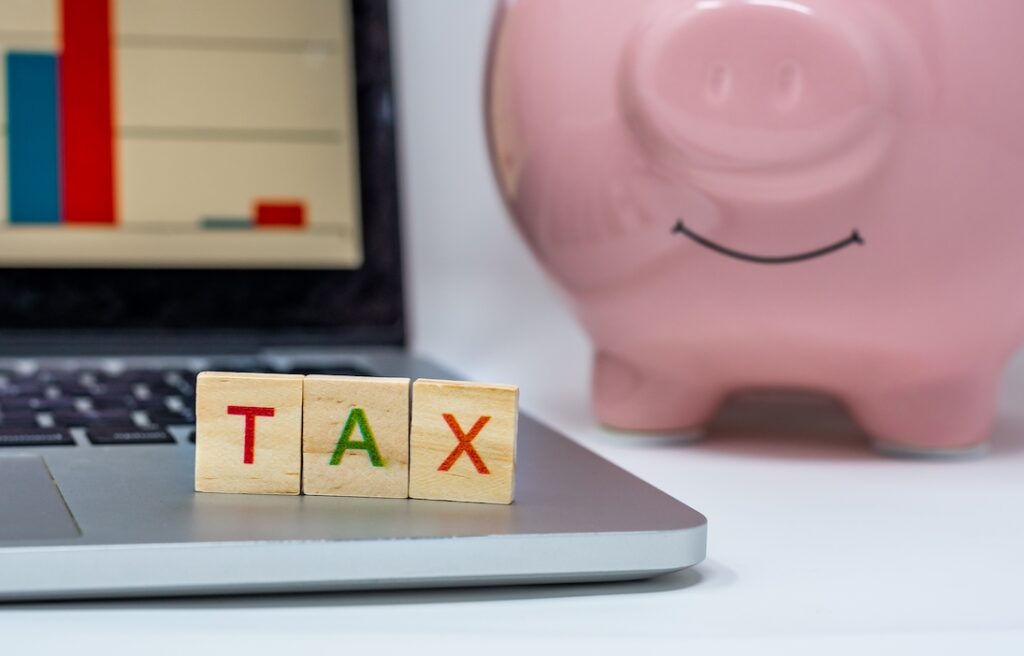
Saving for your first home deposit is a big goal, and doing it through the First Home Super Saver Scheme (FHSSS) can give you a serious tax advantage. One of the best reasons to choose this pathway is the way tax is managed — it can help your savings grow faster and keep more money in your pocket.
Only 15% Tax on Concessional Contributions
When you save house deposit in super, your voluntary concessional contributions (those made from pre-tax income) are taxed at just 15%. This rate is much lower than most people’s marginal tax rate, which can range from 19% up to 47% depending on your income. By paying less tax on the money you put into your super, more of your savings stay invested and working for you.
Tax on Withdrawal Is Much Lower Than Marginal Income Tax
When you apply to release your FHSSS funds, the ATO calculates the amount you can withdraw, which includes your contributions plus earnings. This amount is added to your taxable income for the financial year you withdraw it, but importantly, you can claim a tax offset to reduce the tax payable on these released amounts. This offset means the tax on withdrawal is usually less than your usual marginal tax rate. It’s a big bonus compared to saving outside super, where your interest income might be fully taxed at your highest rate
Compound Interest Within Super Boosts Growth
Another advantage of saving in super is compound interest. As we mentioned, your contributions don’t just sit there — they earn investment returns, which are then reinvested to earn even more returns over time. Because super funds are taxed favourably, these returns compound faster than they would in a regular savings account. Over several years, this compounding effect can add thousands to your deposit fund, helping you reach your homeownership goal sooner.
Potential to Save Thousands in Tax
When you combine the lower tax on contributions, the favourable tax treatment on earnings, and the tax offset on withdrawal, the potential tax savings add up. Depending on your income and how much you contribute, you could save thousands of dollars in tax compared to saving outside of super. These savings mean you get to keep more of your money and put it straight towards your house deposit.
Many first home buyers underestimate how much tax can eat into their savings. By choosing to save house deposit in super via the FHSSS, you’re using a government-backed strategy designed to protect your hard-earned money. It makes saving for your home deposit more efficient and gives you a tax edge that a regular bank account simply can’t match.
Risks And Downsides You Should Know

Using the First Home Super Saver Scheme (FHSSS) to save your house deposit is a smart move, but it’s important to understand the risks and limitations before you dive in. While the scheme offers excellent tax benefits and can help you save faster, some potential downsides could affect your savings journey. Here’s what every first home buyer should consider.
Funds Are Locked Until the ATO Approves Release
One key thing to remember is that your voluntary contributions in super are locked away until you apply for a release through the Australian Taxation Office (ATO). Unlike a regular savings account, you can’t access or withdraw these funds whenever you want. This means your money is tied up, and you’ll need to plan carefully around your home buying timeline. The ATO usually takes between 15 and 25 business days to process your release application, so any delays could affect when you have access to your deposit.
You Must Apply Correctly or Risk Delays or Rejections
Applying for the release of the funds in your super isn’t automatic. You need to apply online through your myGov account linked to the ATO and provide the necessary documentation. Mistakes or incomplete information in your application can lead to processing delays or even rejection. It’s crucial to double-check your details and follow the ATO’s instructions closely. If your application is delayed, it might impact your ability to meet contract deadlines when buying your first home.
Your Contributions May Impact Centrelink Payments
Another important consideration is that voluntary contributions to your super could affect your Centrelink entitlements. Since super savings count towards your assets and income assessment, increasing your super balance might reduce payments such as Family Tax Benefit or the Age Pension. Before making large contributions, it’s wise to seek financial advice, especially if you rely on Centrelink support.
Risk of Legislative Changes Affecting Super Rules
Finally, like all government schemes, the FHSSS operates within the framework of superannuation laws, which are subject to change. Future legislative changes may alter the rules, caps, or eligibility for the scheme, potentially impacting your savings plan. While the scheme is currently stable, it’s smart to stay informed about any updates or reforms that could affect how you save house deposit in super.
Balancing Benefits and Risks
Every financial strategy carries some risks, and the FHSSS is no different. However, by understanding these potential downsides, you can plan better and avoid surprises. The benefits of tax savings and faster growth often outweigh the risks, but you need to make sure your home buying timeline aligns with the scheme’s requirements.
If you’re considering using the FHSSS, talk to a qualified financial adviser or mortgage broker. They can help you navigate these risks, ensure your application is correct, and advise on how your super contributions may affect your overall financial situation.
When And How Can You Withdraw The Funds?

Knowing when and how to withdraw your savings under the First Home Super Saver Scheme (FHSSS) is crucial to making the most of this government initiative. The process is straightforward, but it comes with important rules and timelines that you need to follow to access your hard-earned deposit savings smoothly.
Request a Release via ATO Online Services
When you’re ready to buy or build your first home, the first step is to apply to the Australian Taxation Office (ATO) to release your FHSSS savings. This application is done online through your myGov account, which must be linked to the ATO. The online system guides you through providing the necessary details, such as your super fund information and intended property purchase details. It’s important to ensure all the information you provide is accurate to avoid processing delays.
It Can Take Up to 25 Business Days to Process
Once you submit your release request, the ATO generally takes between 15 and 25 business days to assess your application and transfer the funds. This processing time includes verifying your contributions, calculating the deemed earnings, and coordinating with your super fund. Because of this timeframe, it’s wise to plan your application well ahead of when you need the money. Rushing the process might cause you to miss important contract deadlines when purchasing your home.
You Can Only Request a Release Once
The FHSSS is a one-time opportunity. You can only apply to release funds from your voluntary contributions once under this scheme. This means you need to be confident in your home-buying plans before applying. If you change your mind after withdrawing the funds or your purchase doesn’t go ahead, you must follow specific rules, including returning the funds or facing potential tax consequences.
Must Sign a Contract to Purchase Property Within 12 Months of Release (Extension Possible)
After the ATO releases your FHSSS savings, you must use the money to buy or build your first home within 12 months. Specifically, you need to have signed a contract of sale or building contract within this period. If unforeseen circumstances delay your purchase, the ATO may grant an extension, but this is generally limited and must be applied for before the 12 months expire. Failing to use the funds within the timeframe can lead to the release amount being taxed at your marginal rate without the usual tax offsets.
Tips for a Smooth Withdrawal Process
- Prepare Early: Don’t wait until the last minute to apply for release. Give yourself plenty of time to meet contract deadlines.
- Keep Records Handy: Have your super fund details and purchase contracts ready when applying.
- Check Eligibility: Make sure you still meet the FHSSS criteria at the time of withdrawal.
- Seek Advice: If you’re unsure about timing or paperwork, consider talking to a financial adviser or mortgage broker who understands the FHSSS.
What Happens If You Don't Buy A Home After Releasing The Funds?

Sometimes, life throws a curveball, and you might not be able to buy your home within the required timeframe after releasing your savings. Knowing what happens in this situation is important to avoid unexpected tax bills or penalties.
Option #1 - You Can Recontribute the Money into Super
If you don’t purchase or build your home within 12 months of the ATO releasing your FHSSS funds, one option is to put the money back into your superannuation account. This keeps your savings intact and continues your long-term retirement planning. It’s a sensible way to manage the funds if your home buying plans change or get delayed.
Option #2 - Or Pay a Flat 20% Tax on the Released Amount
If you don’t buy a home or recontribute the funds back into super within the timeframe, the released amount will be treated as assessable income and taxed at a flat rate of 20%. This tax is higher than the concessional 15% tax rate on contributions but lower than most marginal income tax rates. However, this tax can come as an unwelcome surprise, so it’s best to avoid it by sticking to the rules.
Option #3 - You May Also Need to Return Any Earnings
The FHSSS calculates deemed earnings on your voluntary contributions. If you don’t purchase your home within the required period, the ATO may also require you to repay these earnings. This repayment protects the scheme’s integrity and ensures funds are used only for first home purchases as intended.
Because of these consequences, it’s crucial to plan your home purchase timeline carefully. Getting pre-approval for your home loan and having your finances in order before applying to release your FHSSS funds can help you avoid delays. This way, you’re more likely to complete your purchase within the 12-month deadline, keeping your savings safe and tax-efficient.
If your circumstances change after releasing your FHSSS savings, don’t panic. Speak with a financial adviser or tax professional who can guide you on the best course of action. They can help you understand your options, whether it’s recontributing the funds or managing tax obligations.
Can You Combine FHSS With Other Schemes Like First Home Guarantee Or Stamp Duty Concessions?

When saving for your first home, every bit of help counts. Luckily, the First Home Super Saver Scheme (FHSSS) can be combined with other government initiatives, making your path to homeownership smoother and more affordable. Here’s how you can stack these schemes to your advantage.
Yes, FHSS Can Be Used Alongside the First Home Guarantee Scheme
The First Home Guarantee Scheme (previously known as the First Home Loan Deposit Scheme) helps eligible first home buyers purchase a home with a deposit as low as 5%, without paying lender’s mortgage insurance. You can use your released FHSS savings as part of that deposit. The schemes work well together because FHSS helps you build your deposit faster, while the First Home Guarantee reduces the amount of deposit you actually need to buy your home.
You Can Still Apply for Stamp Duty Exemptions or Concessions
Stamp duty can be one of the biggest upfront costs when buying a property. Many Australian states offer stamp duty exemptions or concessions to eligible first-home buyers. Using the FHSS doesn’t affect your ability to apply for these benefits. In fact, combining FHSS savings with stamp duty concessions can ease the financial pressure significantly, letting you keep more money in your pocket.
You Can Use Your Released FHSS Amount for the Deposit and Still Access Lender Benefits
Some lenders offer special deals or incentives for first home buyers, such as discounted interest rates or waived fees. Using FHSS funds for your deposit doesn’t prevent you from accessing these benefits. The released FHSS amount counts just like any other deposit funds, so you can enjoy both the tax advantages of FHSS and the lender’s perks.
Combining These Can Significantly Reduce Your Upfront Costs
When you combine the FHSS scheme with the First Home Guarantee and stamp duty concessions, you’re effectively reducing how much cash you need upfront. This combination means you might be able to enter the property market sooner, with less financial strain. It also helps improve your borrowing capacity since you have a bigger deposit and lower ongoing costs.
It’s important to understand the eligibility and application process for each scheme, as they have different requirements. The FHSSS, First Home Guarantee, and state-based stamp duty concessions all have specific criteria and timelines. Taking the time to research or consult with a mortgage broker or financial adviser can help you maximise your benefits.
Case Study: How James and Priya Saved $45K Faster
James and Priya were a young couple from Melbourne, eager to buy their first home. Like many Australians, they found saving a deposit challenging amid rising living costs. But by using the First Home Super Saver Scheme (FHSSS), they managed to save $45,000 faster and with less stress than they had expected.
Age, Income, and Savings Habits
At the time, James was 32 and worked as an IT consultant earning $85,000 a year, while Priya, 29, was a nurse with an annual salary of $75,000. Both contributed the mandatory 10.5% superannuation through their employers. However, they realised that relying solely on compulsory super contributions wouldn’t build their deposit quickly enough.
Determined to speed up their savings, they committed to making voluntary concessional contributions through salary sacrificing. By redirecting a portion of their pre-tax income into super, they maximised the benefits of the FHSSS, paying just 15% tax on these contributions instead of their higher marginal tax rates.
How Much They Contributed and Saved on Tax
James and Priya each contributed $10,000 a year in voluntary concessional contributions over two years, staying well within the $15,000 annual cap per person. Altogether, they contributed $40,000.
Because these contributions were taxed at 15% inside super rather than their marginal rates (which were around 32.5%), they saved approximately $7,000 in tax compared to saving the same amount outside of super.
How They Accessed the Funds
After two years of consistent saving, James and Priya applied to the ATO for a release of their FHSSS funds using their linked myGov accounts. The ATO processed their application in just over three weeks. They received their combined release amount — their voluntary contributions plus deemed earnings — which they then used as part of their home deposit.
Their Timeline from Saving to Purchase
James and Priya began making voluntary contributions in July 2021. By June 2023, they applied to release their savings. After receiving the funds, they signed a contract on a townhouse in Melbourne within the 12-month deadline required under the FHSSS. They settled on the property three months later.
Thanks to the FHSSS, they built their deposit faster, reduced their tax burden, and kept their savings securely held in super until they were ready to buy.
James and Priya’s story shows how combining voluntary super contributions with the First Home Super Saver Scheme can make a real difference. If you want to save house deposit in super and get ahead faster, following their disciplined approach and understanding the scheme’s rules can put you on the right track.
How To Save House Deposit In Super FAQs:
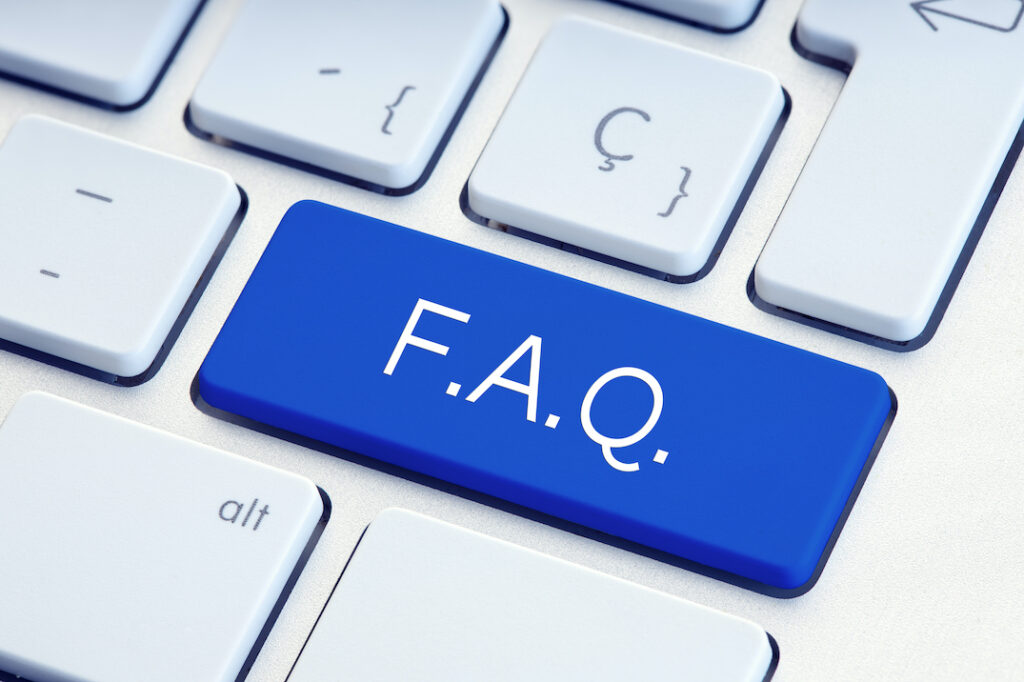
Can I use my existing super balance for a house deposit?
No, only voluntary contributions made under the FHSS scheme are eligible. You can’t touch your employer’s SG contributions. The ATO will only release amounts you’ve added voluntarily, plus associated earnings. Think of FHSS as a separate savings pot inside your super.
What's the maximum amount I can withdraw under FHSS?
You can withdraw up to $50,000 of eligible voluntary contributions. That’s after July 1, 2022 — before that, the cap was $30,000. This doesn’t include your regular employer contributions. The $50k limit applies to individuals, so couples can access up to $100k combined.
Is FHSS the same as using super early for buying a home?
Not quite. FHSS is a special carve-out in the super laws for first-home buyers only. It doesn’t allow you to dip into your full super early — only your FHSS contributions. It’s a controlled way to save smarter, not an early release loophole.
Can I salary sacrifice into super for FHSS?
Absolutely — and it’s one of the best ways to grow your deposit. Salary sacrifice is treated as a concessional contribution, taxed at just 15%. This can boost your savings faster compared to saving from your take-home pay. Just make sure you stay under the annual caps.
What if I have already made after-tax contributions — do they count?
Yes, non-concessional (after-tax) contributions also count towards FHSS. The ATO includes them in your withdrawal cap. But you still need to formally apply for release and track them through your fund. Be sure to label them correctly when making payments.
How long does the FHSS release process take?
It typically takes 15–25 business days for the ATO to process a request. That’s why timing is everything — don’t apply last-minute when you’ve already found a home. Your funds will be transferred to your nominated bank account. From there, you can pay your deposit or settlement costs.
Can I use FHSS if I've owned property before?
Only if you meet the financial hardship provisions. Generally, FHSS is for first-time buyers who’ve never owned residential property in Australia. If you lost a home due to a relationship breakdown, illness or hardship, you might qualify for an exception. The ATO decides this on a case-by-case basis.
Can I use FHSS with a guarantor loan?
Yes, you can. Your FHSS deposit can be used together with a guarantor home loan, helping you avoid Lenders Mortgage Insurance (LMI). This strategy can supercharge your path to home ownership. Work closely with a broker to make sure the timing lines up.
Can I use my FHSS money for land?
Yes, as long as you plan to build a home and live in it. The scheme supports land purchases where you’ll construct a primary residence. You’ll need to sign the contract within 12 months of funds being released. That timeline applies to house-and-land packages too.
What happens if I don't buy a home within 12 months?
You can request a 12-month extension from the ATO. If you still don’t buy, you’ll need to return the money to super or pay a flat 20% tax on the assessable amount. That’s why it’s critical to plan your timing. Talk to your broker before applying for release.
Do all super funds support FHSS contributions?
Most do — but not all. It’s important to check that your super fund tracks voluntary contributions correctly. Some smaller or self-managed funds may not handle FHSS well. Always double-check before you start saving via super.
Will FHSS affect my ability to get a home loan?
Not negatively — in fact, it shows great financial discipline. Lenders like seeing structured savings like FHSS. Just make sure the release happens in time to show your deposit funds. Your broker can guide you on how to present this to banks.
Final Thoughts: Is Saving House Deposit In Super Right For You?

Saving for your first home is an exciting yet challenging goal. The First Home Super Saver Scheme (FHSSS) offers a powerful way to save house deposit in super, helping you grow your savings faster with tax advantages. But like any strategy, it’s important to see if it suits your personal situation.
The FHSSS is ideal if you have a steady income and can make regular voluntary contributions to your super. It suits first home buyers who want to benefit from paying just 15% tax on contributions, rather than their higher marginal rate. If you don’t mind having your money locked away until the ATO approves the release, and you plan to buy or build your home within 12 months after accessing the funds, this scheme could work well for you.
It’s also a great fit if you want to combine the FHSSS with other support schemes like the First Home Guarantee or stamp duty concessions, giving you extra buying power.
However, FHSSS isn’t right for everyone. If you need access to your savings quickly or expect to buy very soon without the ability to wait for ATO processing (which can take 15-25 business days), this method may not suit you. Also, if you rely on Centrelink benefits, making large super contributions could affect your payments. The scheme also requires some admin effort — tracking contributions and applying to the ATO correctly — so if you prefer a simpler savings method, consider other options.
Lastly, if your home buying plans are uncertain or you might delay your purchase past the 12-month deadline, FHSSS could cause complications or additional tax.
How A Broker Can Support Your Journey
A mortgage broker or financial adviser can be invaluable here. They’ll help you understand eligibility, plan contributions, navigate tax rules, and combine FHSSS with other grants or concessions. They ensure your savings strategy fits your income and timeline, and help avoid costly mistakes during the application process.
Our team at Hunter Galloway is here to help you buy a home in Australia. Unlike other mortgage brokers who are one-person operations, we have an entire team of experts dedicated to helping make your home loan journey as simple as possible.
If you want to get started, please give us a call on 1300 088 065 or book a free assessment online to see how we can help.







 Start again
Start again






